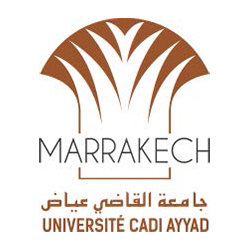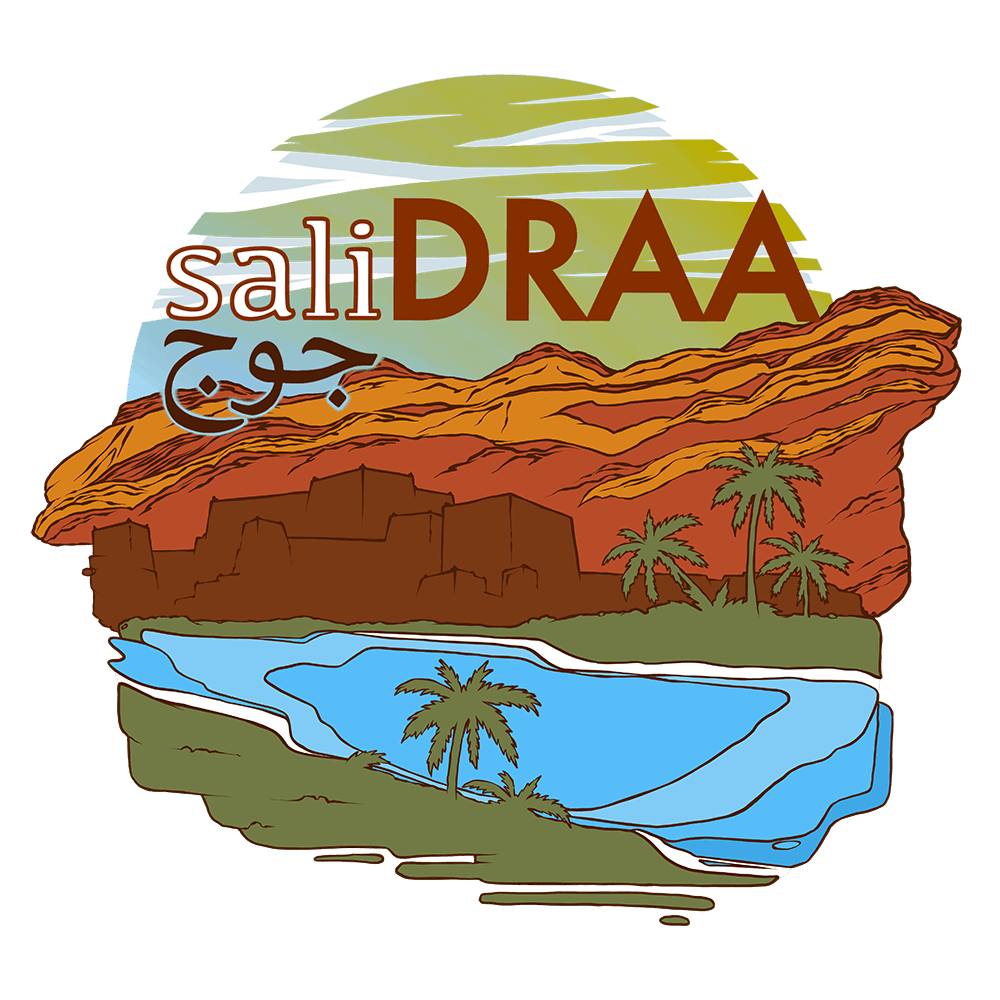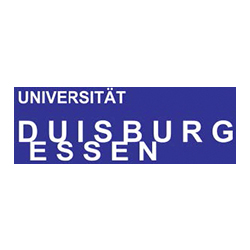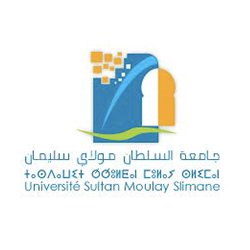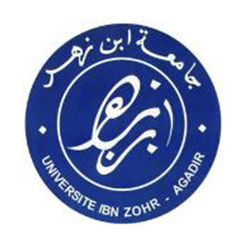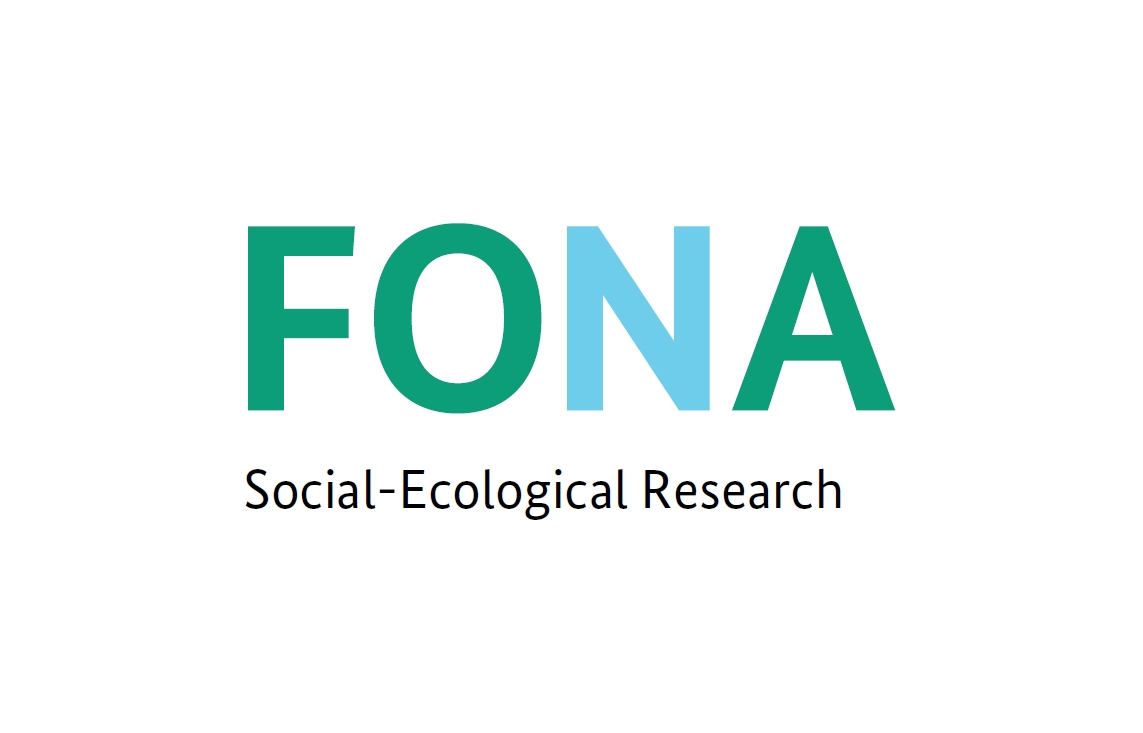It’s German Moroccan research project
that focusses on Salinity in the Draa –> SailDraa. The Draa is the basin of the longest intermittent river (Wadi) in southern Morocco and one of the 10 driest basins in the world. The French herpetologist Jérôme Maran had first discovered the blue-eyed tortoise of the Sahara Desert in the oasis of Sidi El Mehdaoui south of Tata, near the Algerian border. He found increasing salinity in isolated ponds with dead turtles, no frogs nor watersnakes, but some fish and aquatic insects.
Our question was therefore to what extent turtles could cope with drought and salinization. While studying the behavioural and physiological adaptations of the turtles and by crossing the desert in search of other turtle populations and associated biota, soil and water was found to be widespread. The new question was then how this phenomenon, combined with aridity and river intermittency, can impact other aquatic and semi-aquatic biota, human communities and ecosystem processes in desert environments.
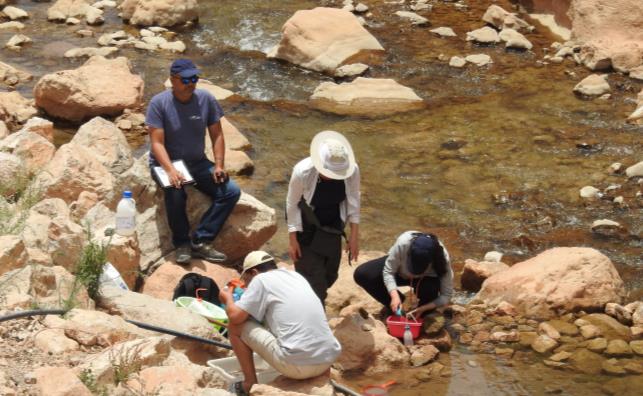
To explore the impacts of these threatening environmental stressors, a preliminary project SaliDraa was funded under the 3rd edition of the Moroccan-German program for scientific research (2016-2018), between the Faculty of Sciences, Semlalia, Cadi Ayyad University of Marrakech, Morocco, and the Institute of Environmental Sciences, University of Koblenz-Landau, Germany. Among the main objectives of this first project was the elaboration of a large project to develop further investigations on the ecological and socio-economic impacts of water salinization in the arid Draa Basin as well as resulting feedback loops and social-ecological interactions. Thus, the second project SaliDraa juj (juj means the number 2 in Moroccan Arabic/Dharija) was named: Salt in the system – Biodiversity and ecosystem services in water resources management in the arid Draa river basin, Morocco, and was selected for funding by the German Federal Ministry of Education and Scientific Research (BMBF) for the period April 2019 to March 2024.
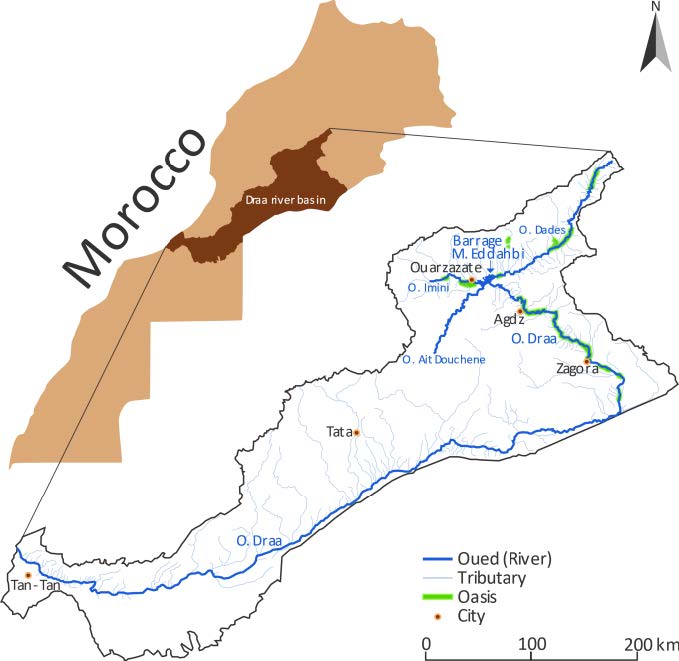
Morocco
The Draa River Basin
The basin is characterized by a dry climate and intermittent rivers that periodically cease to flow. It is subject to many hydrological changes due to climate change and different forms of water abstraction and land use.
What is the problem?
Salinization of soils and water bodies
Climate change, the overuse of water resources and falling groundwater levels contribute to increasing salinization of soils and water bodies in the Drâa River Basin.
This negatively affects the survival of local plant and animal species, reduces agricultural production and threatens human well being.
Hence sustainable adaptation strategies are needed to preserve biological diversity and ensure water availability for human livelihoods.
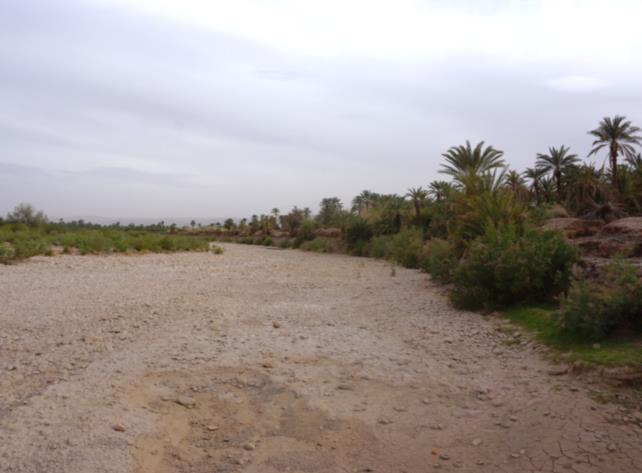
What do we want to achieve?
Our Aims
Together with all stakeholders, assess the benefits that different groups of users derive from the river ecosystem.
Record the aquatic and semi aquatic biological diversity.
Understand how biodiversity contributes to goods and services humans get from ecosystems.
Understand existing water and land management practices and solutions.
Develop strategies and suggestions to adjust existing water use practices and management approaches to better balance conservation of biodiversity and ecosystem services in the Drâa River Basin.
Combine different scientific disciplines to develop a case study that can inform other arid regions.
Further, SaliDRAA جوج aims to guide young scientists towards collaborative research work involving many different disciplines and stakeholders
How do we get there?
By combining the perspectives and knowledge of natural and social scientists working in close collaboration with local actors.
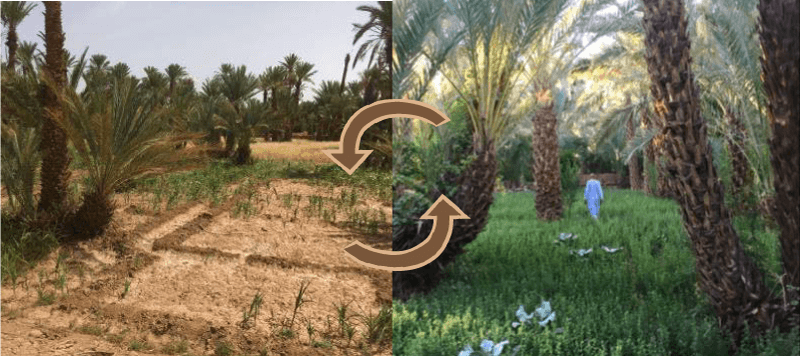
Our Partners
Thank you for your support
